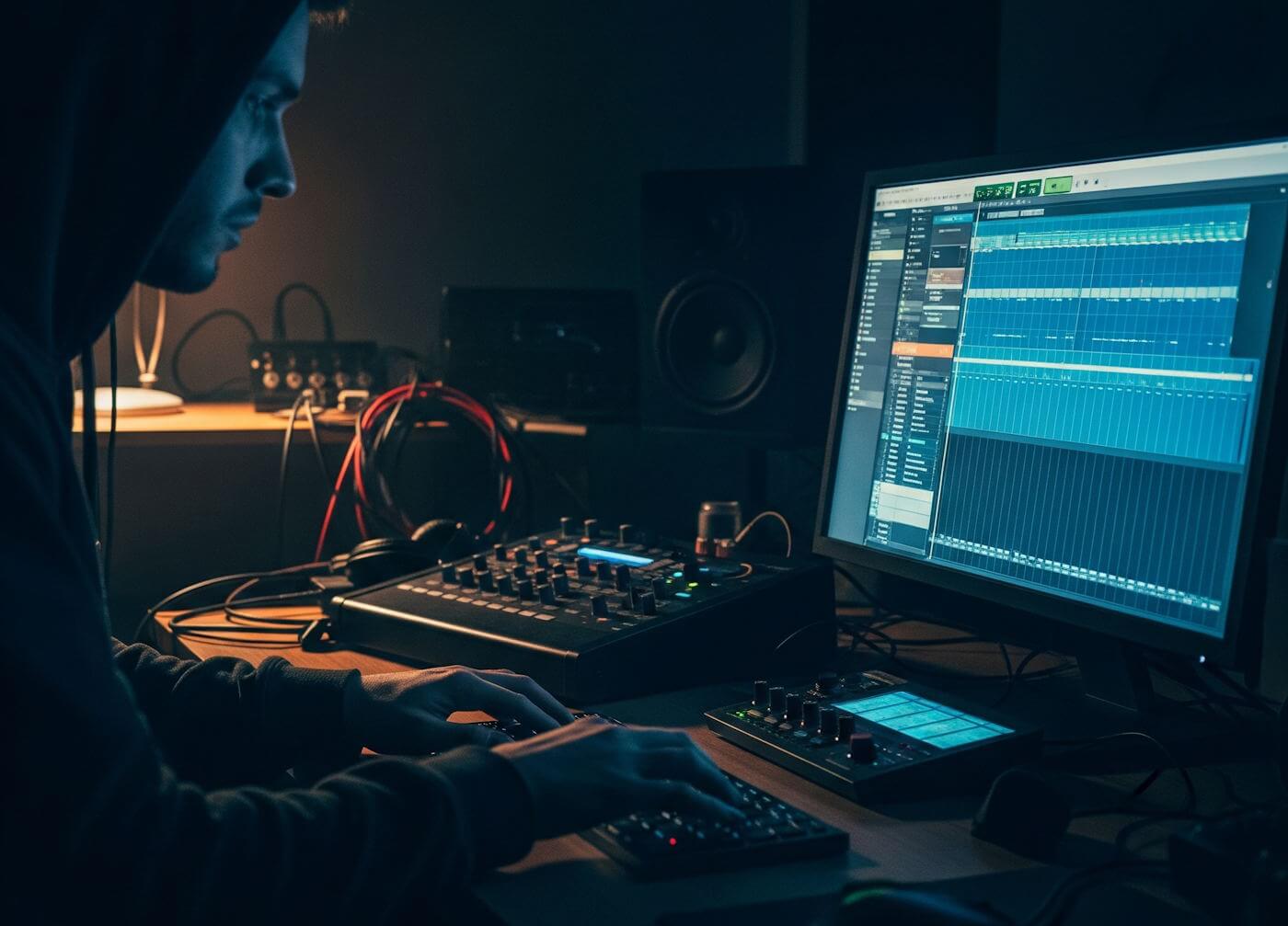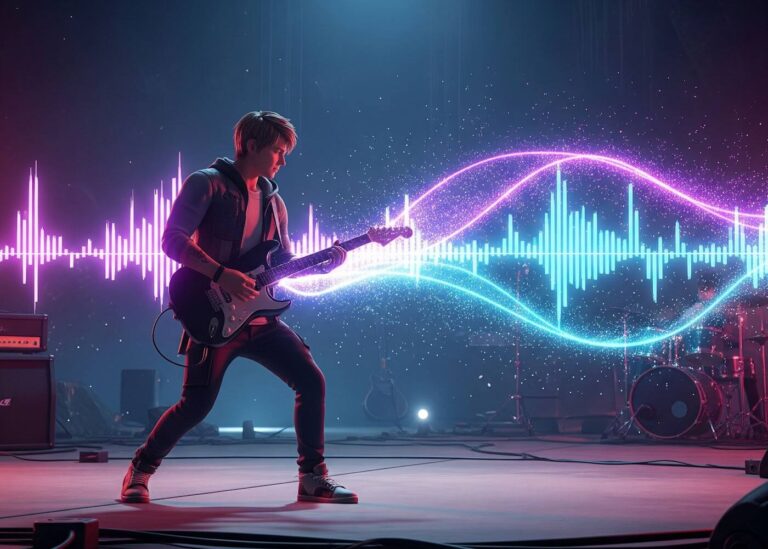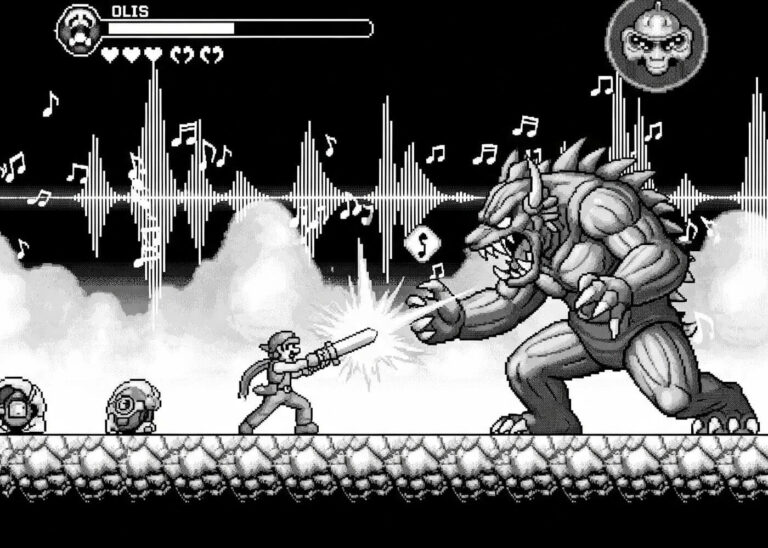Music That Builds Suspense in Stealth Games
Introduction to Stealth Game Music
The realm of stealth games is characterized by a blend of strategy, observation, and tension, elements that are intricately intertwined with the role of music. In these games, music serves not merely as a backdrop but as a pivotal component that enhances the atmosphere and fuels players’ emotional responses. Unlike in action-packed genres where music often heightens excitement and fuels adrenaline, the music in stealth games possesses a unique function that is primarily focused on building suspense and encouraging cautious gameplay.
This nuanced approach to music consists of ambient soundscapes, subtle motifs, and sometimes, complete silence, all strategically placed to evoke feelings of anxiety, focus, and anticipation. The music often shifts dynamically in response to player actions or in-game events, creating an auditory representation of the tension and danger that lurks within the environment. Rather than overpowering the gameplay, stealth game music complements visual cues and narrative elements, fostering an immersive experience that is central to the genre.
Through the overarching presence of music, developers can guide players into a heightened state of engagement, making them acutely aware of each decision they make. As we delve deeper into the characteristics and specific uses of music in stealth gaming, it will become clear how essential it is to crafting an unforgettable player experience grounded in tension and suspense.
The Psychology of Suspense in Music
In the realm of stealth games, music plays a pivotal role in shaping the player’s experience and emotional journey. The psychological effects of music can be profound, particularly when it comes to evoking suspense and tension. Various musical elements—such as tempo, harmony, and dynamics—are strategically employed to heighten feelings of anxiety, anticipation, and urgency, ultimately influencing a player’s decision-making process.
Tempo, for instance, can significantly impact the rhythm of gameplay. A faster tempo often increases heart rates, creating an urgent atmosphere that prompts players to act quickly. On the other hand, a slower tempo may instill a sense of foreboding, allowing players to feel the weight of their environment and encouraging them to adopt a more cautious approach. This manipulation of tempo is a powerful tool in a game designer’s arsenal, as it can seamlessly integrate with gameplay mechanics, amplifying the tension experienced during critical moments.
Harmony and dissonance further contribute to the psychological fabric of suspense in music. Harmonious chords can evoke a sense of safety or calmness, while dissonant harmonies create discomfort and unease. Stealth games often utilize these opposing musical elements to maintain a delicate balance between serenity and menace, mirroring the precarious nature of the player’s situation. This fluctuation in musical harmony cultivates a sense of unpredictability, keeping players on edge as they navigate through complex environments filled with potential threats.
Additionally, dynamics—variations in volume and intensity—serve to heighten emotional responses. Sudden crescendos or drops in volume can prompt a visceral reaction, alerting players to impending danger or unexpected twists in gameplay. Through these multifaceted musical techniques, stealth games successfully tap into the psychological underpinnings of suspense, drawing players deeper into their immersive worlds.
Iconic Suspenseful Tracks in Stealth Games
Stealth games have long been celebrated for their ability to invoke tension and suspense, and a significant component of this atmosphere is the music selected to accompany the player’s journey. Tracks from various acclaimed stealth titles have employed sophisticated musical techniques that enhance the gaming experience by aligning closely with gameplay mechanics. One notable example is the soundscape from Metal Gear Solid, where composer Harry Gregson-Williams skillfully utilizes orchestral arrangements and electronic elements to convey an encompassing sense of urgency and stealth. The music shifts in intensity according to the player’s actions, creating an intricate interplay between the gameplay and sound.
Another iconic soundtrack is found in Assassin’s Creed, where the use of ambient music plays a pivotal role in reinforcing the historical settings and the protagonist’s surroundings. The halting strings and ethereal vocals adapt to the environmental dynamics, amplifying the player’s feeling of immersion. The game’s score blends seamlessly with stealth mechanics, heightening moments of tension as players navigate crowded markets or scale rooftops. This synergy invites an emotional connection to the character’s plight while simultaneously maintaining suspense.
The score from Thief, a cornerstone of stealth gaming, boasts tracks that blend eerie, minimalistic sounds with subtle harmonies. The music here underscores the protagonist’s sneaky movements, fostering an atmosphere that feels both claustrophobic and foreboding. Instances where the music crescendos in response to nearby guards create palpable tension, making players more acutely aware of their surroundings and possible threats. These examples illustrate how well-composed music can transport players into a realm where every note resonates with the gameplay experience, thereby crafting memorable moments of suspense.
Building Atmosphere with Ambient Sounds
In stealth games, the atmospheric experience is often enhanced significantly through the strategic use of ambient sounds. These elements serve a dual purpose: they not only guide players’ actions but also evoke emotional responses that heighten the sense of tension throughout the gameplay. The incorporation of background noises, such as distant conversations, rustling leaves, or the subtle hum of machinery, creates a rich soundscape that complements the musical score, crafting an engaging environment in which players can immerse themselves.
Silence, when utilized effectively, is another tool that plays a critical role in building suspense. Extended periods of quiet can cause players to become acutely aware of their surroundings and the potential dangers lurking within it. This heightened awareness enhances the effect of any sudden sounds or musical cues, which can trigger an adrenaline rush and surprise players at key moments during gameplay. For instance, a sudden shift in the soundscape—such as a sharp note in the music or an abrupt noise—can serve to jolt players and amplify their sense of urgency.
Moreover, sound design elements, such as reverb and panning, can further enhance the emotional impact of the music. By manipulating how sounds travel in the game world, developers can create a sense of space that influences how players perceive danger. For example, sounds that come from far away can signify distant threats, while those that approach rapidly can indicate imminent danger. This dynamic interaction between ambient sounds and the musical score ensures that players remain engaged and alert, making each stealth mission an exhilarating experience.
Ultimately, the thoughtful integration of ambient sounds with musical scores transforms the gaming environment into an intricate tapestry of suspense. This synergy not only captivates players but also enriches their overall experience, encouraging deeper emotional investment in the game’s narrative and atmosphere.
Dynamic Music Systems in Stealth Gameplay
In stealth games, the integration of dynamic music systems plays a crucial role in enhancing the overall gameplay experience. These systems are designed to adapt and respond to player actions, such as movement, detection, or successful evasion, creating an immersive environment that enhances the elements of suspense and tension. The music’s evolution throughout the game not only mirrors the player’s decisions but also elevates the emotional stakes associated with each scenario.
One of the primary features of dynamic music systems is the implementation of adaptive soundtracks. Unlike traditional static scores, adaptive soundtracks are composed of multiple layers and elements that can change intensity, tempo, and style based on the game’s context. For instance, when a player successfully sneaks past an enemy or hides from view, the music may shift to a lower intensity, providing a sense of relief and security. Conversely, if the player is detected or enters a high-risk environment, the music may escalate in tempo or volume, generating immediate suspense and urgency.
This ability to react to gameplay not only enhances immersion but also influences player behavior. By manipulating the audio landscape, developers can guide players into making more cautious choices or taking calculated risks, thus fostering a more engaging experience. The incorporation of dynamic music systems can also be tied to environmental cues, such as changes in lighting or weather, further enriching the atmosphere and reinforcing the tension inherent in stealth gameplay.
Moreover, the seamless transition between different musical segments ensures that the player’s experience remains fluid, allowing them to stay focused on the unfolding narrative while being subtly influenced by the audio feedback. As a result, dynamic music systems become an integral aspect of stealth gameplay, enhancing suspense and providing a deeper emotional connection to the game world.
Cultural Influences on Stealth Game Music
The influence of cultural backgrounds on the music of stealth games is profound and multifaceted, contributing to the unique atmospheres that define each title. Different regions incorporate their traditional musical elements into game scores, enhancing the thematic depth and creating distinctive, suspenseful experiences for players. For instance, Japanese stealth games often feature traditional instruments, such as the shamisen or shakuhachi, which evoke a sense of history and contemplation, aligning with the game’s narratives of honor and stealth.
In contrast, Western stealth games may integrate elements from orchestral music or even modern electronic genres. For example, the Assassin’s Creed series effectively melds historical musical styles with contemporary soundscapes to create tension and immerse players in the historical context. This fusion allows each game to resonate with its cultural heritage while also appealing to a global audience, thereby enhancing the overall gaming experience.
Additionally, the use of ambient sounds, such as environmental noises specific to different cultures, can elevate the emotional engagement of players. For example, incorporating the sounds of bustling marketplaces or serene natural landscapes in levels set in various countries can play a significant role in making a stealth experience feel authentic. The music and auditory landscapes used in stealth games serve not only to heighten suspense but also to serve as cultural narratives that resonate with the players’ backgrounds.
Moreover, analysis of auditory patterns demonstrates how different cultural influences shape not just the composition but also the pacing of gameplay in stealth games. As players navigate through environments, carefully crafted musical cues signal shifts in tension, allowing players to attune their strategies based on cultural context. By integrating regional musical traditions into stealth game mechanics, developers craft a rich tapestry of sounds that echo the complexities of both gameplay and cultural storytelling.
The Role of Silence in Enhancing Suspense
In the realm of stealth games, silence emerges as a powerful tool that significantly enhances the player’s experience. The strategic use of quiet moments or minimalistic music creates a palpable sense of tension, making players more aware of their surroundings. By deliberately minimizing auditory stimuli, game developers allow players to focus intently on the subtle sounds that may indicate danger, thus amplifying feelings of suspense and urgency.
Games such as “Metal Gear Solid” and “Mark of the Ninja” expertly employ silence to heighten the stakes. In these titles, players often find themselves progressing through environments that are eerily quiet, prompting them to listen closely for any signs of enemy movement or environmental cues. The absence of music during critical moments encourages heightened alertness and anticipation, forcing players to engage with the game world on a more intimate level. By placing emphasis on silence, these games create an atmosphere rife with uncertainty, where any sudden sound can provoke fear and anxiety.
Furthermore, minimalistic musical scores can complement these silent interludes effectively. The carefully timed introduction of sound, whether it be a minimalist score or ambient noises, serves to punctuate moments of action or decision-making. When players hear the faintest rustle or the distant footsteps of an approaching guard, these sound cues can evoke a deep emotional response, reinforcing the game’s overarching themes of stealth and survival. The interplay of silence and sound is essential for crafting a tense environment where every moment carries weight.
This masterful use of sound design, combined with the strategic implementation of silence, cultivates a thrilling experience that captivates players and keeps them on the edge of their seats. Through these techniques, stealth games offer an immersive narrative that leverages the power of quietness to evoke real emotional reactions and engagement from their audience.
Future Trends in Stealth Game Music
The evolution of music in stealth games is increasingly influenced by advancements in technology, particularly through the integration of artificial intelligence (AI) and adaptive soundscapes. As game developers seek to enhance player immersion and emotional involvement, AI-generated music offers an innovative approach to create dynamic soundtracks. These soundtracks can adapt in real-time to the player’s actions, decisions, and emotional responses, significantly enhancing the suspenseful atmosphere characteristic of stealth games.
Emerging AI algorithms have the capability to analyze a player’s gameplay style and emotional state, leading to a more personalized audio experience. For instance, if a player exhibits a cautious approach, the music can shift towards a more subtle and tense composition, elevating the stakes of the game at that moment. Conversely, during moments of high tension, the AI can respond by intensifying the soundtrack to amplify the feeling of urgency. This creates a fluid auditory environment that aligns with the narrative and gameplay, ensuring that music remains an integral part of the player’s experience.
Another significant trend on the horizon is the use of personalized soundscapes that evolve based on biometric data from players. Wearable devices could provide real-time feedback on a player’s heart rate or stress levels, prompting adjustments to the music accordingly. Such integration would not only heighten the suspenseful elements of gameplay but also further immerse players in the psychological tension of stealth scenarios.
Moreover, the development of spatial audio technology will enable developers to provide a more nuanced listening experience. By simulating realistic sound environments, players can discern distant footsteps or subtle changes in their surroundings, informing their strategic decisions. As these technologies continue to develop, the way music influences gameplay in stealth games will undoubtedly transform, creating more profound emotional connections and gripping experiences for players.
Conclusion: The Lasting Impact of Music in Stealth Games
In the realm of stealth games, the integration of music plays an essential role in shaping player engagement and amplifying the overall gameplay experience. Through careful crafting, music not only enhances emotions but also serves as a vital tool to elevate tension and suspense. The strategic use of soundscapes within these games allows developers to guide players’ actions, heighten their awareness, and create a sense of immersion that is difficult to replicate through visuals alone.
The relationship between music and stealth gameplay is multifaceted. Composers create dynamic scores that adapt to the player’s choices, ensuring that each moment feels unique and responsive. This adaptability enriches the experience, as players often find themselves becoming more engrossed in the narrative and the environment when the music reflects the unfolding events. The interplay of melodic themes and ambient sounds can evoke feelings of anxiety, exhilaration, or calm, strongly influencing the player’s emotional state.
Moreover, the lasting impact of music in stealth games can be observed in players’ memories. Iconic soundtracks often remain ingrained in the minds of players long after they have set down the controller, leaving an indelible impression that contributes to a game’s legacy. This written connection demonstrates how music can foster attachment and nostalgia, enhancing the emotional payoff and replay value of stealth games.
Ultimately, the artistry behind sound in gaming is critical to creating a fully realized experience. Stealth games thrive on the ability to build suspense and facilitate strategic gameplay, and music is the heartbeat of this artistry. As the gaming landscape evolves, it is essential to recognize and appreciate the meticulous integration of music, which profoundly shapes how players interact with and remember these captivating virtual worlds.







